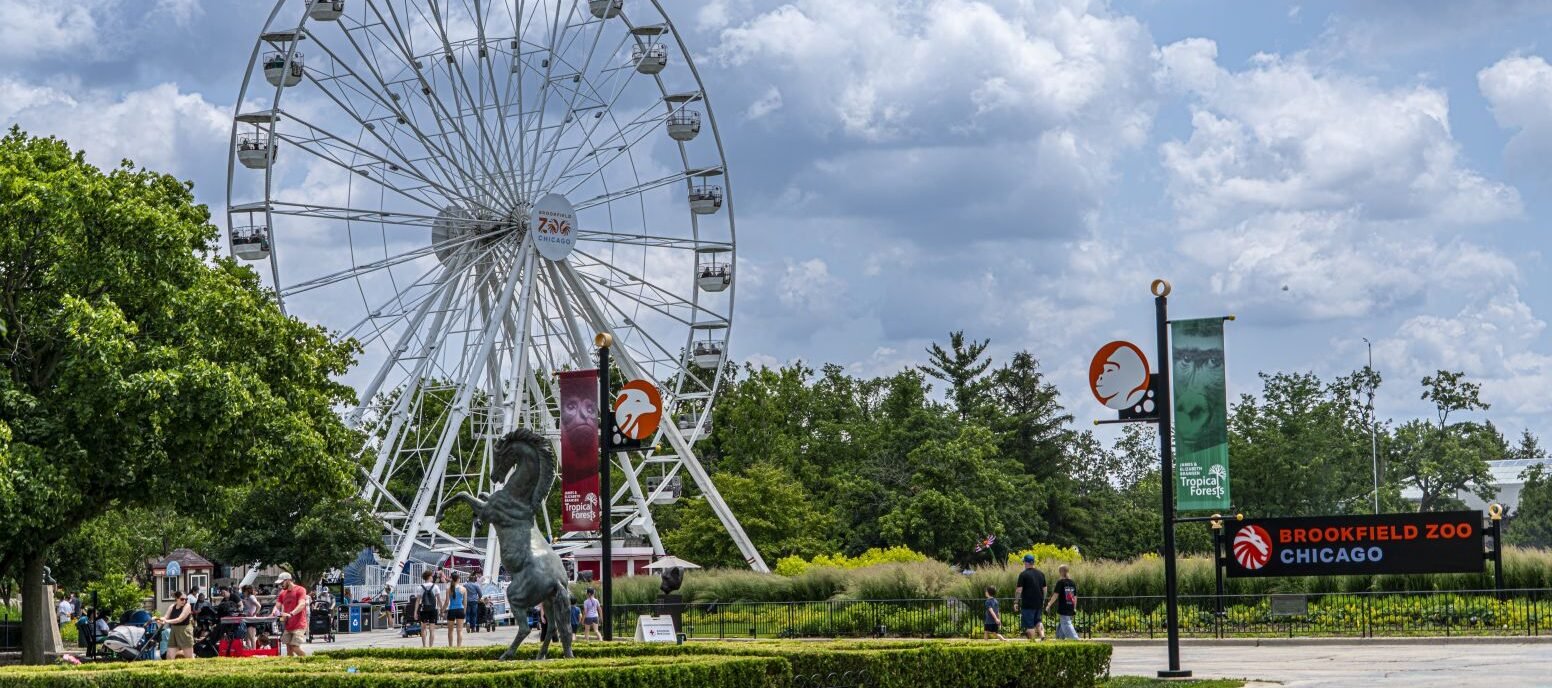
Chicago, Where Ingenuity and Nature Go Hand in Hand
Few places manage to strike such a happy balance between nature and human innovation as Chicago and its surroundings. You don’t have to travel far from the city to find perfect examples of marriage between people and the natural environment, from gardens and houses to stadiums. Come visit Come visit them with Panorama.
By: Juan Abelardo Carles
Photos: Javier Pinzón
The area surrounding the economic hub of Chicago, one of the U.S.’s largest cities, has that strange quality of being and not being, of being here and there. Stretched out between Lake Michigan and the Mississippi River, the long, gentle slope that begins at the foot of the ancient Appalachians ends here in this hollow, the gateway to the endless plains.
Not surprisingly, the city’s idiosyncratic inhabitants, history, and surroundings are characterized by transitions, connections, and overlaps. Panorama of the Americas invites you to explore the region in search of signs of this “being” and “being here,” focusing on the duality of nature and human ingenuity. This focus makes sense, given that one of the masters of this type of alchemy began to work his magic here. We’re talking about Frank Lloyd Wright.
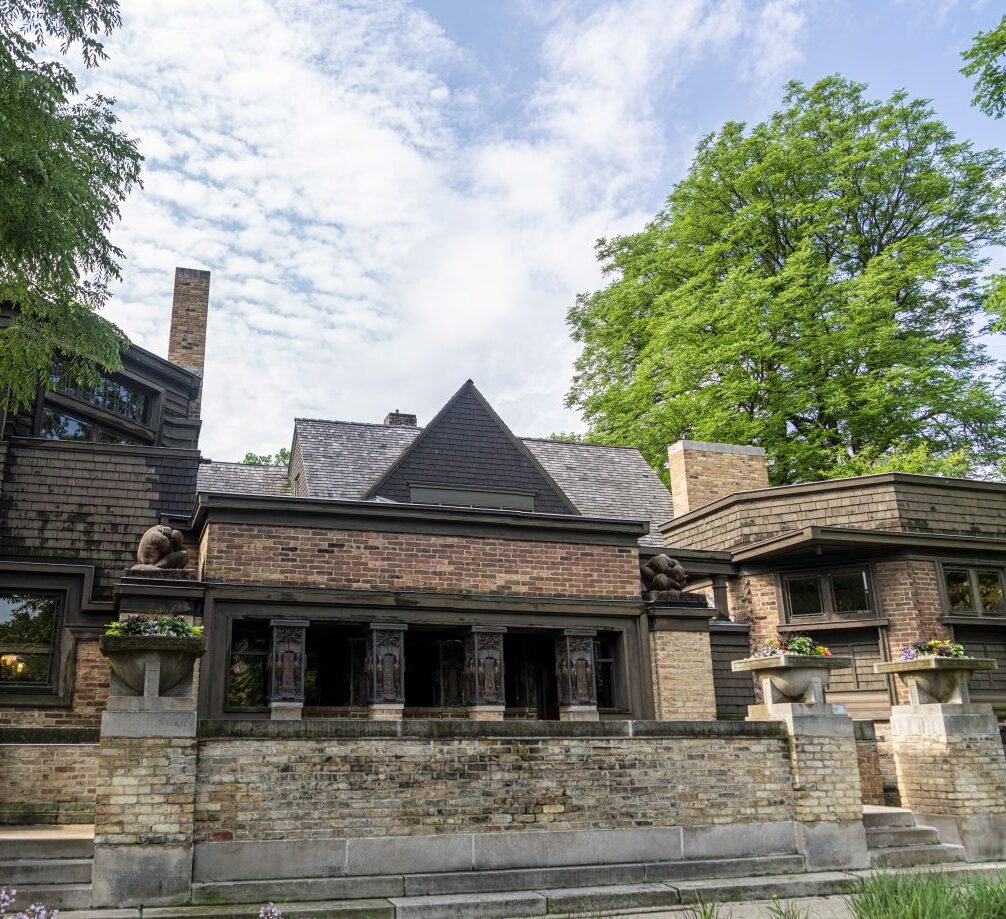
The Legacy of Frank Lloyd Wright
Born in Wisconsin in 1867, he put the United States on the map of the world architecture, where he created the style Prairie, but the road to greatness began in Oak Park, a suburb of Chicago, in 1889. Here Wright designed and built his first home, developing many of the characteristics he would later transfer to his most famous works, such as Fallingwater House (Pennsylvania, 1939)ylvania, 1939), the the monumental Guggenheim (Nueva York, 1959) and Taliesin West (Arizona, 1937), where he lived untilthe end of his life in 1959.
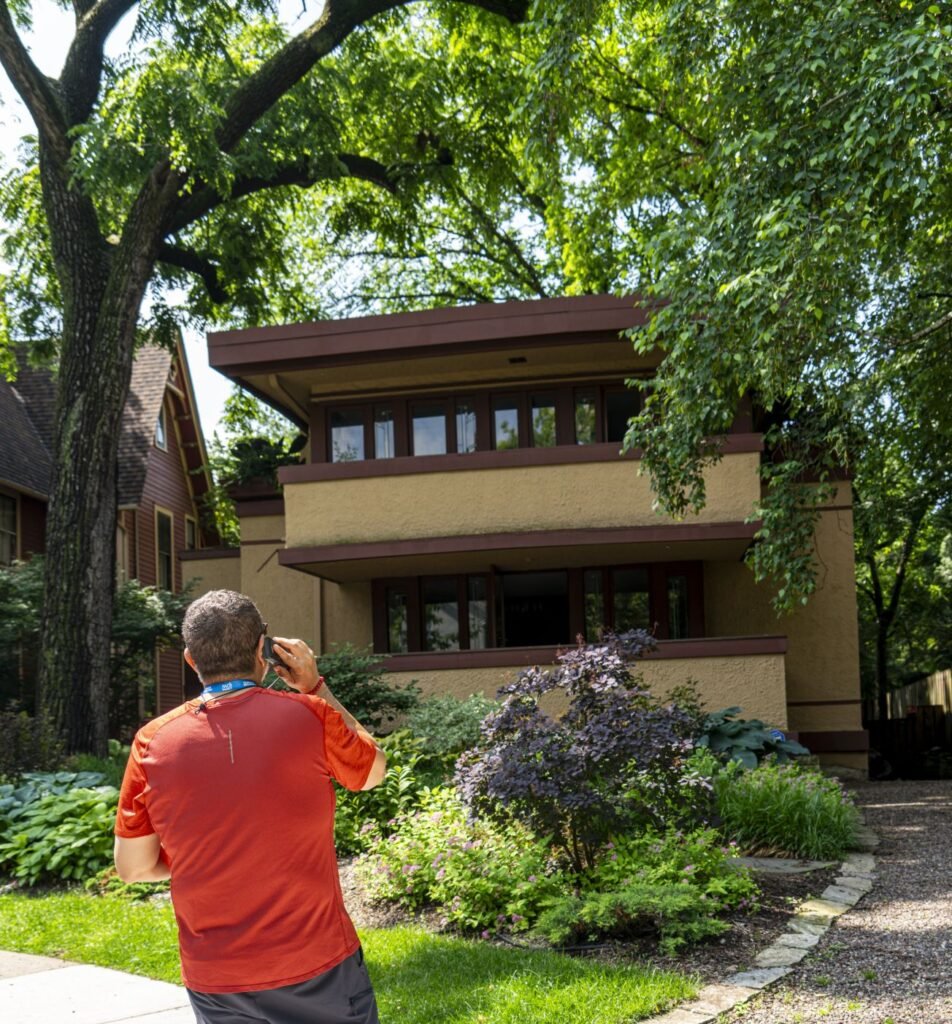
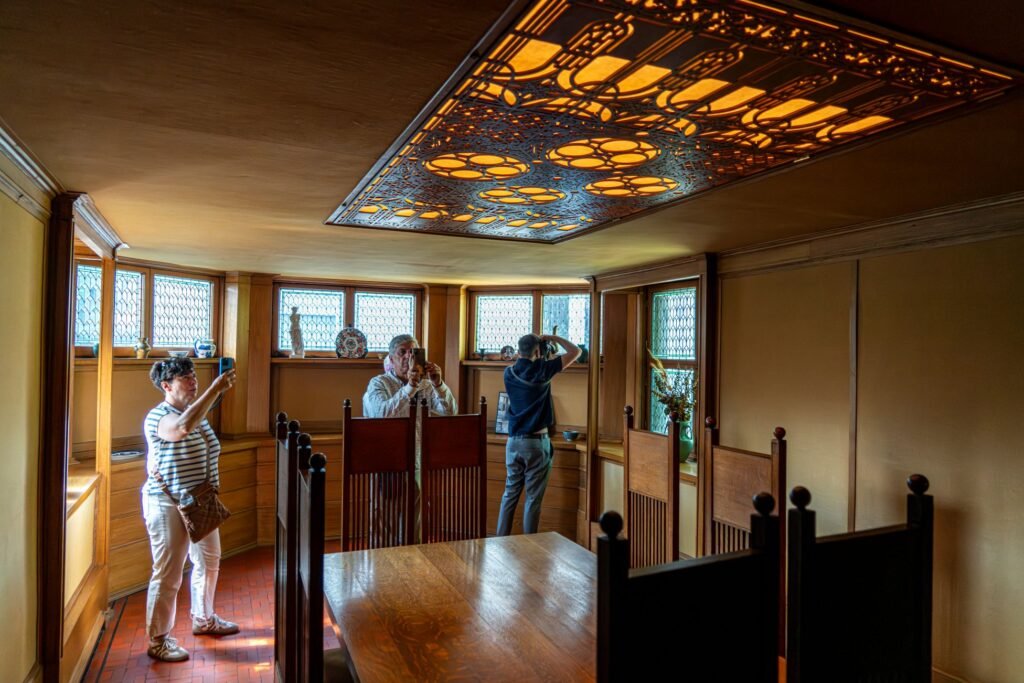
The Wright Home and Studio now belong to the Frank Lloyd Wright Preservation. The visitors can tour the rooms, including the outstanding octagonal drafting room with its masterful use of natural light, and the playroom with its central fireplace. Later, you can tour the neighborhood where Wright designed more than 30 homes, including Unity Temple (1904). . Reserve your tour through www.flwright.org.
Frank Lloyd Wright’s Oak Park Home and Studio was where the famous architect spent the first twenty years of his career.
In fact, the architect’s legacy seems to radiate through the entire region, where you can visit other homes he designed. Laurent House (Rockford, 1951 1951), ), built for a paraplegic war veteran, gave Wrighta chance to propose inclusive solutions for people with disabilities decades before the concept was widely discussed.. Fabyan Villa (Geneva, 1907) was not designed by Wright, but he did remodelit.. Owned by a Gilded Age millionaire, the design evoked all the elements of Wright’s simple, rural Prairie stylesimple, rural Prairie style — a name that is rather misleading in this case, as the property included a Roman-style bath and a Dutch-style windmill. For more information on these properties, visit www.laurenthouse.com and www.ppfv.org/fabyan-villa-museum, respectively.
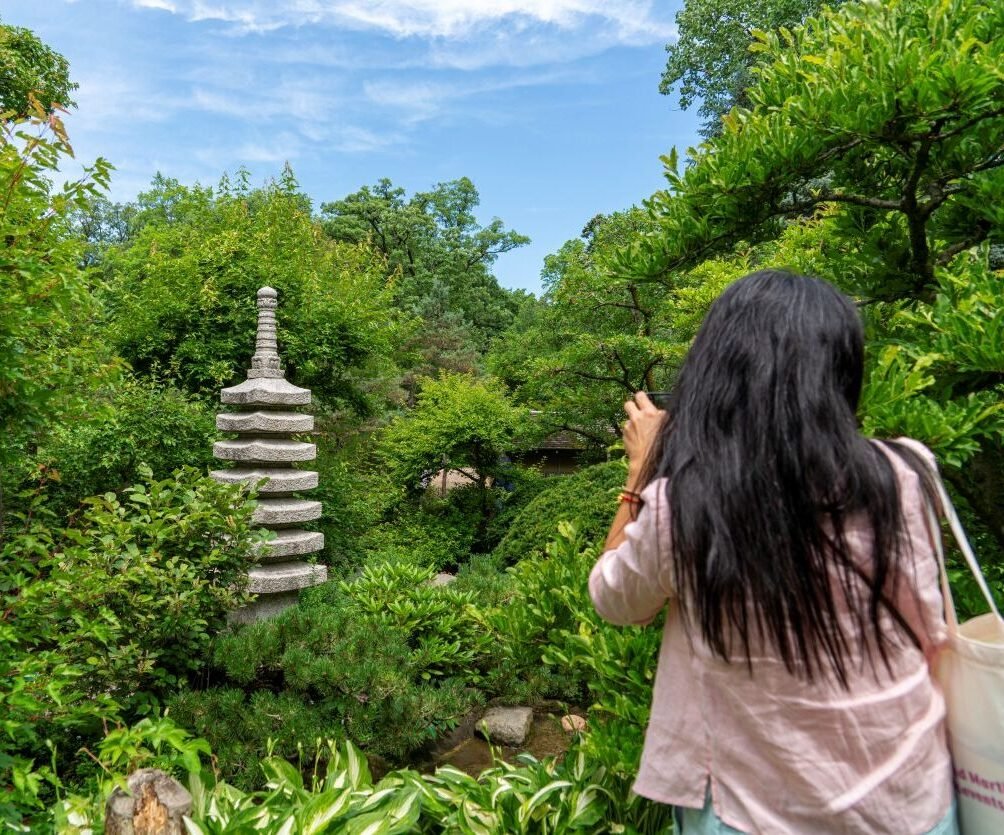
Gardens for Serenity

The public gardens in the Chicago area vary in size and purpose. The Oak Park Conservatory opened in 1929. Its iron structure, designed by architect Victor C. Alden, defines three separate spaces that each host a different ecosystem: Mediterranean, desert, and tropical. There is also an open space for local native flora. The dramatic differences between these spaces makes moving from one area to another feel like traveling from planet to planet through a dimensional portal.
Blumen Gardens in Sycamore is another unique spot. The town, once an important railroad hub, transformed its old train installations into a wide open space with gardens, greenhouses, gift shops, and event halls. Blumen has a warm, family-friendly feel to it; it treasures the trees and plants that were planted by ancestors with their descendants in mind.
Fabyan Villa also boasts one of the most beautiful Japanese gardens in the region, with Japanese pines, spectacular maples (which put on a colorful show in autumn), and wisteria that offers up its scent every spring. It’s not the only Japanese garden in the area though. This style of landscape seems particularly suited to bringing together intellect and nature. Anderson Gardens (Rockford, 1970), created by local philanthropist John Anderson, was designed to recreate the gardens he visited on his many trips to Japan.
Here you’ll find all the characteristic elements of Japanese gardens, from the famous Zen sand gardens to the tea house for guests to the fish ponds filled with koi, turtles, and a daring tiger heron fishing for a bite to eat. Don’t miss the scenic Moon Bridge and don’t leave without visiting the gift shop, which is filled with charming souvenirs. For more information on both gardens, visit www.ppfv.org/fabyan-japanese-garden y www.andersongardens.org/.
Fabyan Villa, once owned by a Gilded Age millionaire, features a Roman-style bath, a Japanese garden, and a Dutch-style windmill.
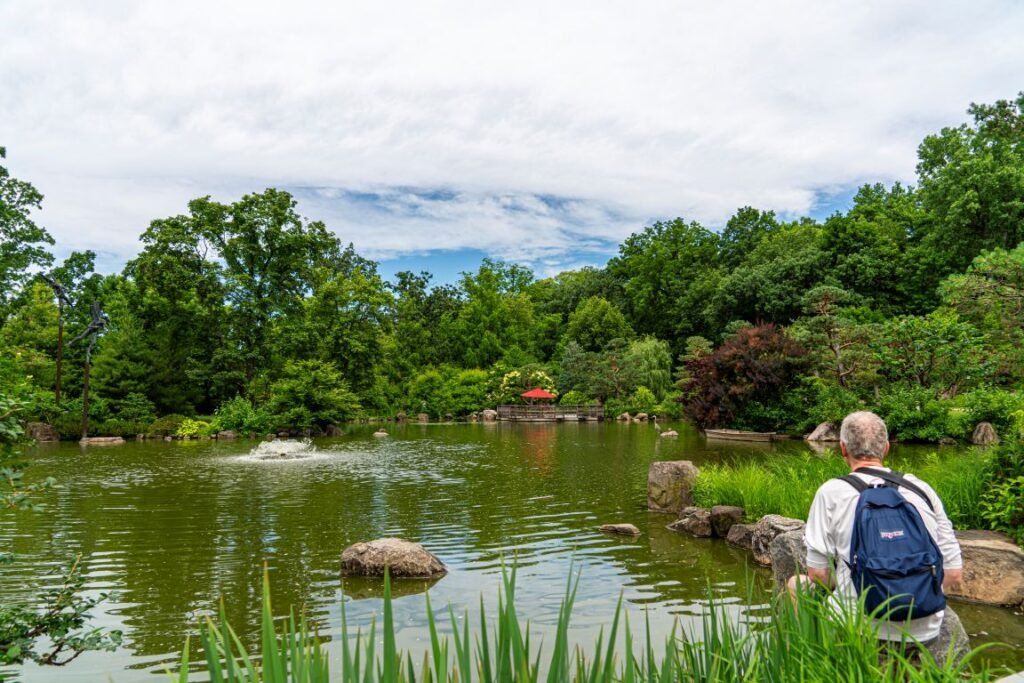
Large-scale Experiences
Given the region’s relationship to the Great Plains, it’s no surprise to find expansive parks and natural surroundings. Classic examples include the Chicago Botanical Gardens (Glencoe, 1972), with 27 separate gardens and four natural exhibits on its 385-acre campus. Its six miles of trails lead you through spectacular landscapes that include islets and lakes. www.chicagobotanic.org. Another wonderful option is the 215-acre Brookfield Zoo, which offers a journey through habitats from around the world: a neo- and paleotropical African savannah, coastal ecosystems from around the globe and, of course, North America.
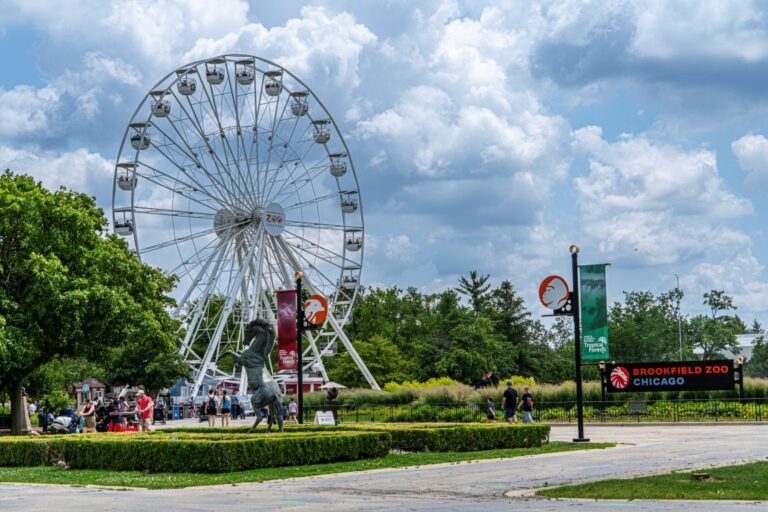
Grand Finale Times Three
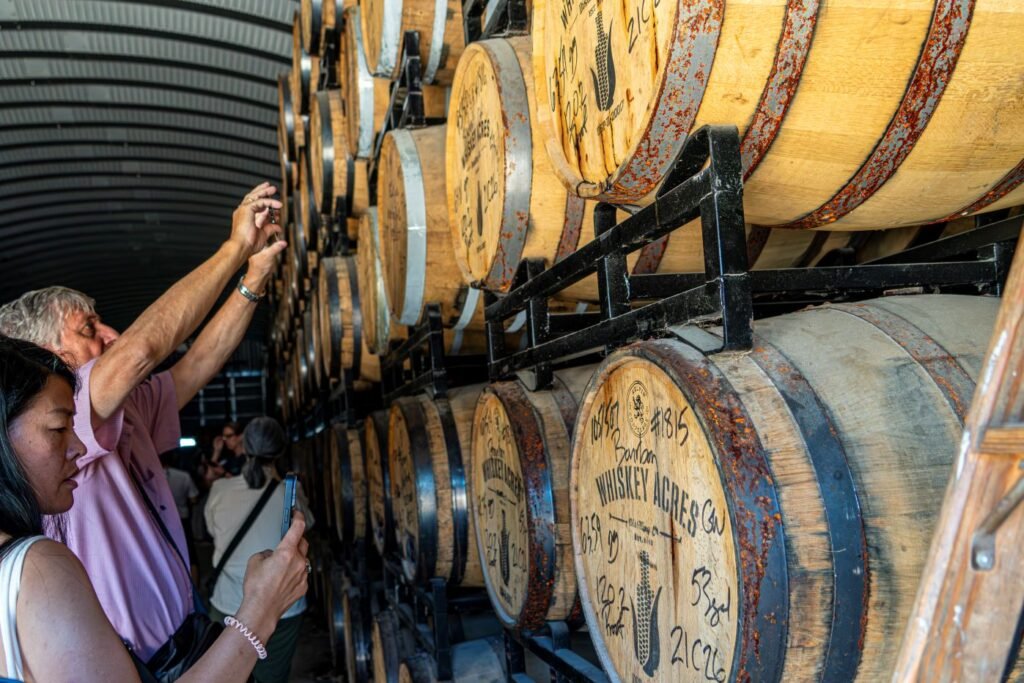
As you can see, the people of Chicago are masters at interacting creatively with nature, and it’s no different when it comes to having fun.. For our grand finale to this select group of experiences, Panorama suggests three options that, although not so natural,are very green. Enjoy a tasting of sweet corn whiskey aged in barrels for 5-7 years and learn all about the new forms of this classic spirit at Whiskey Acres Distilling Co. www.whiskeyacres.com; take a deep dive into traditional U.S. culture while cheering for the Chicago Dogs at Impact field, www.thechicagodogs.com/ or my favorite: a sunset concert at Ravinia Park (Highland Park) https://www.ravinia.org/. f you’d like to know more about all that the state of Illinois has tooffer, visit www.enjoyillinois.com

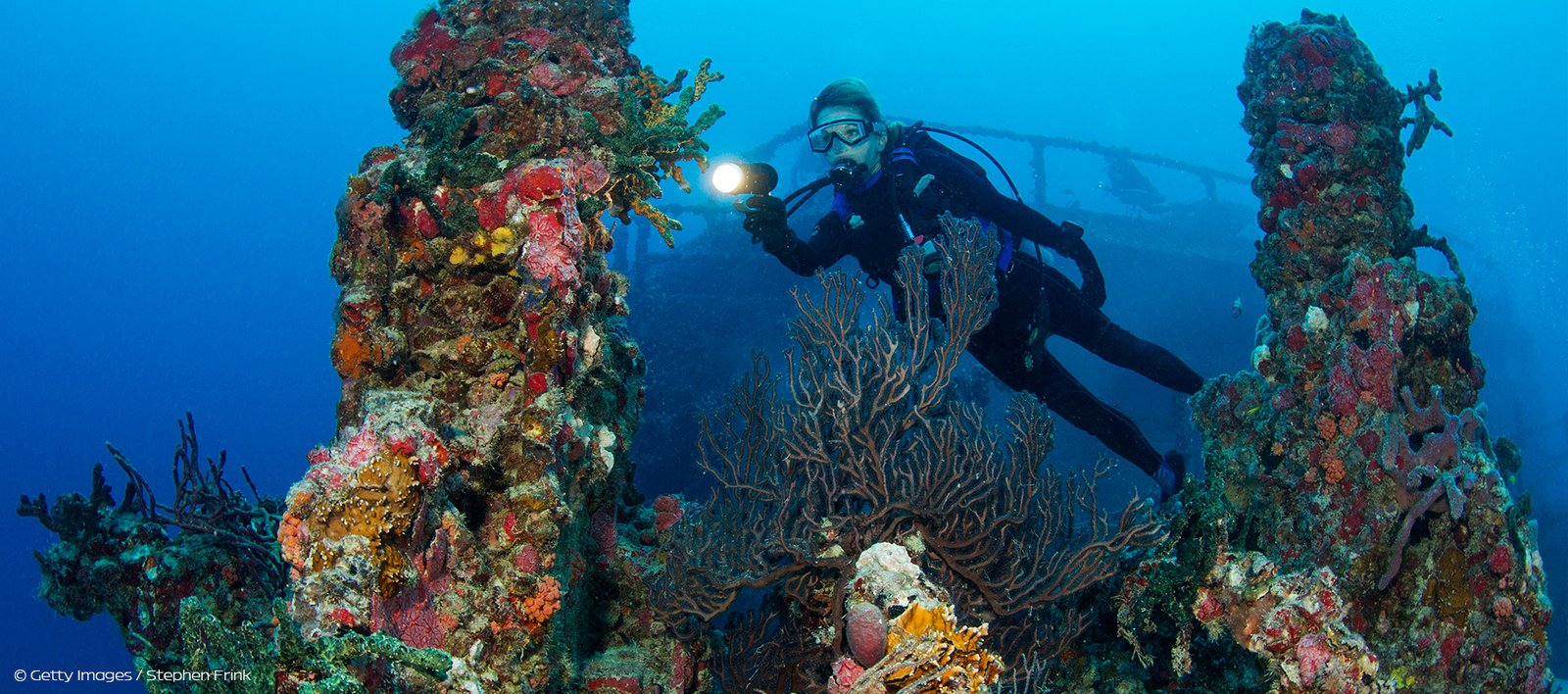

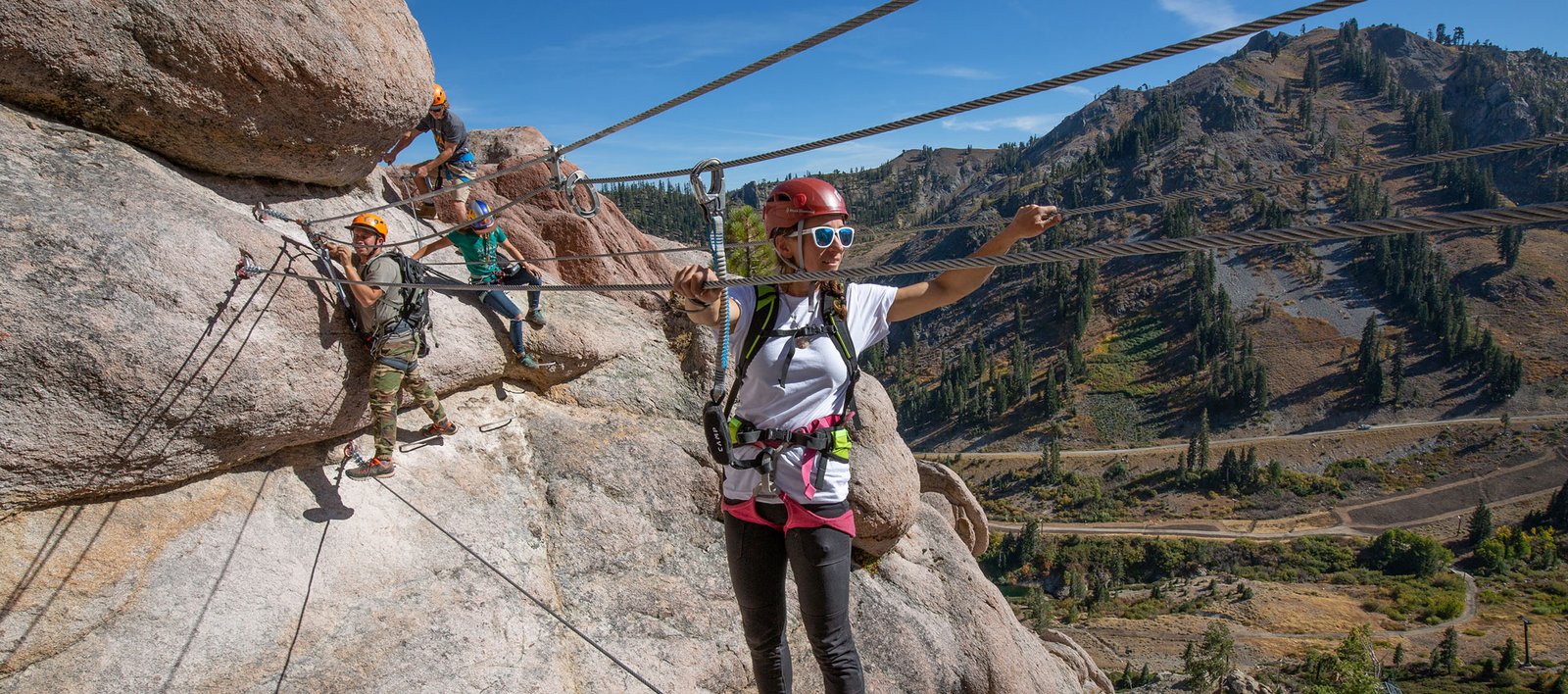
Leave a Reply